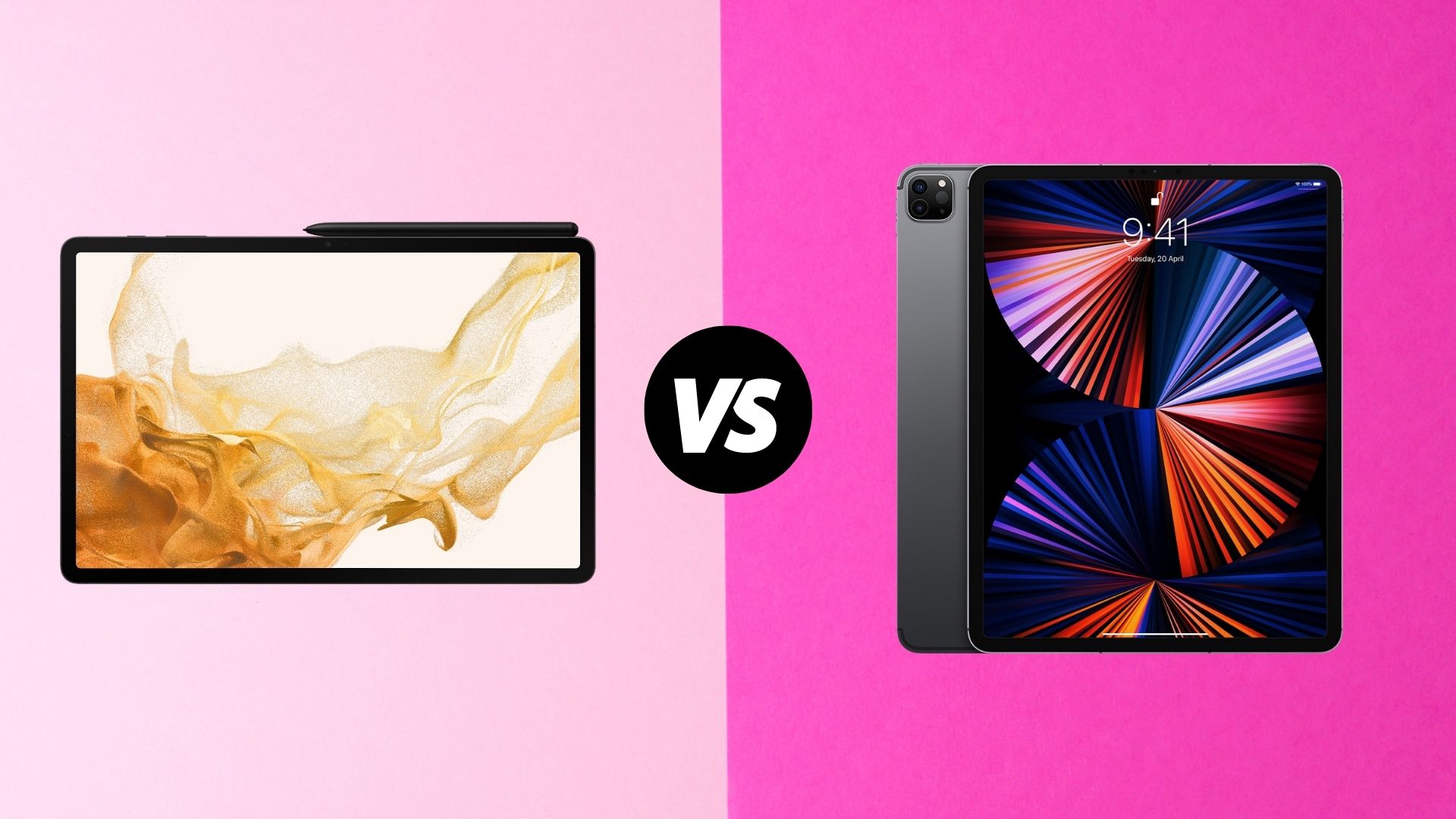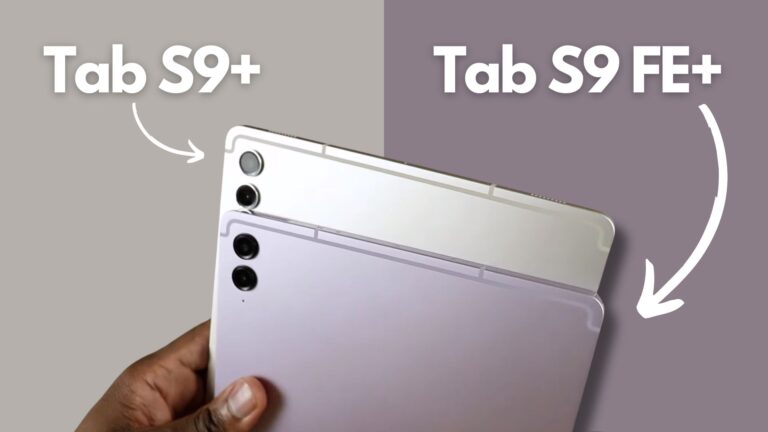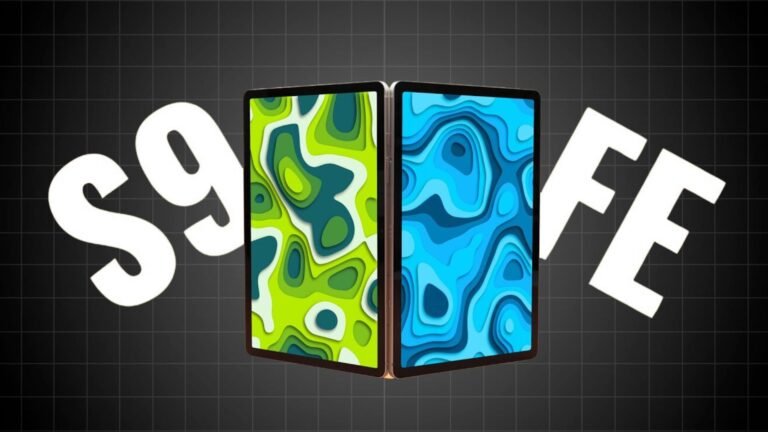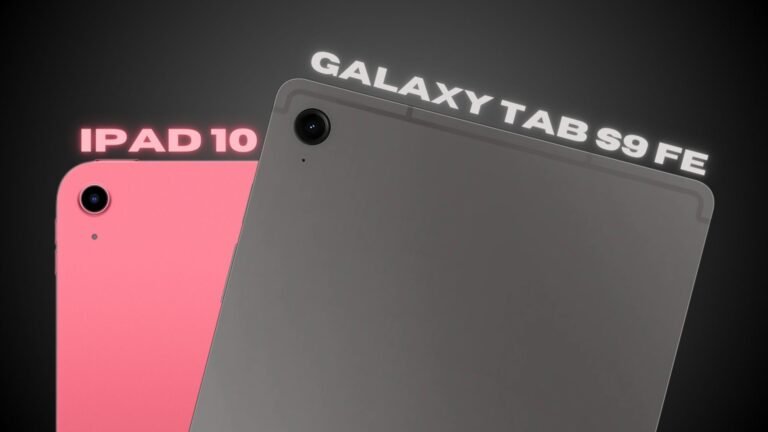I compared the Galaxy Tab S8 Ultra to the iPad Pro 12.9-inch. Samsung is now positioning the Tab S8+ as a capable Android alternative to Apple’s 11-inch M1 iPad Pro. The iPad Pro costs $799 and the Tab S8+ costs $899, at least in the United States. Remember that when you buy the S8+, you get a free S Pen, so let’s take a closer look.
| Samsung Galaxy Tab S8 Plus | 11-inch iPad Pro |
 |  |
| BUY NOW | BUY NOW |
| PROS | PROS |
| ✅ Thin, lightweight, scratch-resistant design ✅ Latest SoC with 8GB of RAM ✅ S Pen is better than ever ✅ One UI 4 is a game-changer ✅ Reliably long battery life ✅ Four OS updates / security through 2027 | ✅ Desktop PC-level performance ✅ Lightweight and portable form factor ✅ Good battery life |
| CONS | CONS |
| ⛔ Expensive ⛔ No charger or cover in box ⛔ Not compact enough for some people ⛔ Most Android apps are still unoptimized | ⛔ iPadOS doesn’t utilize the power of M1 ⛔ Doesn’t feature an XDR display ⛔ Can get quite pricey with higher storage |
Galaxy Tab S8+ vs iPad Pro: Specs
| Galaxy Tab S8 Plus | 11-Inch iPad Pro | |
| Display | 12.4-inch Super AMOLED display with 120Hz refresh rate | 11-inch Liquid Retina Display with 120Hz refresh rate |
| Processor | Qualcomm Snapdragon 8 Gen 1 | M1 Processor |
| Storage | 128GB / 256GB | 128GB / 256GB / 512GB / 1TB / 2TB |
| Cameras | 13 megapixel autofocus/6-megapixel ultrawide with flash (rear); 12 megapixel ultrawide (front) | 12 megapixel wide, 10 megapixel ultrawide (rear); 12 megapixel ultrawide (front) |
| Battery | 10,090mAh | 7,538mAh |
| Stylus included | S Pen Included | Apple Pencil (2nd Gen) supported (not included) |
Galaxy Tab S8+ vs iPad Pro: Display
The Tab S8+ has a beautiful 12.4-inch Super AMOLED display with a resolution of 1752×2800, a 16:10 aspect ratio, 120 Hertz refresh rate, and 266 pixels per inch.
The iPad Pro has a smaller 11-inch Liquid Retina display with a resolution of 1668×2388, an aspect ratio of 10:7, 120 Hertz adaptive refresh rate, and an almost identical pixel density of 256 pixels per inch.

In terms of image quality, I’m going to give the Tab S8+ the edge. The display is bright, colorful, and has super dark blacks thanks to the AMOLED technology, which creates a nice contrast. When watching video, the aspect ratio of 16:10 is also advantageous because it is much closer to the content’s actual aspect ratio, resulting in a much larger image and smaller black bars on the top and bottom. There isn’t much of a difference when it comes to taking notes or using these tablets in Portrait Mode. They’re about the same width, but the Tab S8 is taller, so you can see more without having to scroll.
The iPad Pro now has an adaptive refresh rate of up to 120 Hertz, which is one of its advantages. You can choose between 120 Hertz and 60 Hertz on the Tab S8+, but the tablet will stay in that mode until you change it. Apple’s ProMotion feature on the iPad Pro detects what type of content is being displayed and then lowers the resolution when you’re doing things like reading to save battery life. The rate can then be increased to 120 Hertz while scrolling or navigating around the home screen or settings, giving you a more responsive and fluid user experience.
Finally, both displays are excellent, so you really can’t go wrong here. But if I had to choose a display for watching videos, it would be the Tab S8+. It’s larger, has excellent image quality, and a better aspect ratio for watching video. The 11-inch iPad Pro is noticeably smaller in terms of portability, making it slightly more convenient to carry around, but the difference isn’t significant.
Galaxy Tab S8+ vs iPad Pro: Design
Both tablets now have a premium appearance and feel. On both devices, we have machined aluminum all the way around, rounded corners, flat edges, and bezels that are roughly the same size.

Both tablets now feature a USB-C Type-C port. The one on the Tab S8+ is a USB 3.2 port, while the one on the iPad Pro is a Thunderbolt/USB 4 port. This upgraded port can now transfer data at a faster rate. If transferring a large number of photo or video files to and from your tablet is a part of your workflow, the iPad Pro’s extra bandwidth will come in handy.
The Tab S8+ has a micro SD card slot, allowing you to expand the internal storage by up to one terabyte. When compared to expanding the internal storage on the iPad Pro, you can use this space for files as well as some apps, making it a much less expensive way to add storage.
Galaxy Tab S8+ vs iPad Pro: Biometrics
Face ID uses the iPad Pro’s TrueDepth front-facing camera for biometric authentication. The Tab S8+, on the other hand, employs less secure facial recognition but includes an on-display fingerprint sensor that I have found to be very useful. Finally, Face ID on the iPad Pro is more reliable and secure than the Tab S8 + facial recognition. At the same time, I really like having the on-display fingerprint reader, so it’ll come down to personal preference.
Galaxy Tab S8+ vs iPad Pro: Speakers
Both tablets have four speakers, two on each side, and both sound great for a tablet, though the Tab S8+ speakers are a little louder. They have a little more presence, and at full volume, there is less distortion. Personally, I’d be happy with either option here, but if you’re looking for the best audio quality, the Tab S8+ AKG-tuned speakers with Dolby Atmos support are the way to go.
Galaxy Tab S8+ vs iPad Pro: Cameras
Camera Specs
When we compare the camera systems, we see that Samsung definitely made some needed improvements. Both tablets have an Ultra Wide, 12-megapixel front facing camera. The iPad Pro can record up to 1080p/30 and the Tab S8+ can go up to 4K/60.
Now, moving onto the rear-facing camera modules. The Tab S8+ has a 13-megapixel Wide and a 6-megapixel Ultra Wide camera versus 12-megapixel Wide and 10-megapixel Ultra Wide on the iPad Pro. Both camera modules include a flash, but the iPad Pro also has a LIDAR scanner.
Now that I always have my phone and it’s much more convenient, I rarely use the rear-facing cameras on my tablet. However, here are some examples to demonstrate the quality.
Galaxy Tab S8+ Camera Samples
Samsung has also improved their image quality and here’s a quick sample.

iPad Pro Camera Samples
Here are the front and rear camera samples of iPad Pro.

Apple Center Stage Vs Samsung Auto-Framing
Both tablets now have a unique feature. Apple refers to it as Center Stage, while Samsung refers to it as auto-framing. In essence, the Ultra Wide camera on both tablets can recognize a subject or a group of subjects and then zoom in and out to ensure that they are properly framed even as they move around the frame.
When reframing, I discovered that Apple’s Center Stage has smoother transitions. When it comes to video calls, I prefer the Tab S8+ camera placement because it’s in the middle of the long edge, which ensures that I’m always properly framed.
Galaxy Tab S8+ vs iPad Pro: Keyboard & Stylus
Now, if you’re like me, you may consider expanding the functionality of both of these tablets by adding a keyboard case and then maybe a stylus.

So, let’s take a look at the differences. The iPad Pro is compatible with the 2nd generation Apple Pencil. It pairs wirelessly, it can be stored and charged on the side of the iPad, and it costs $130. The Tab S8+ comes with a free S Pen, which also pairs wirelessly. It can be stored on the side or on the back of the Tab S8+, but it will only charge on the back. You can assign a function to the button on the S Pen, which is similar to the Apple Pencil’s double tap function, but the S Pen also has several Bluetooth functions. So, you can use it to do things like take pictures, control media playback, and for a few other useful tasks.
Both devices now have fully laminated displays, which makes the content appear to be on top of the glass and the tip of each stylus appear to be touching the content being created. Although latency is low in both cases, the actual writing or drawing experience is vastly different. So the Apple Pencil has a firm tip, and when it hits the glass, it’s a little harsher. It gives the impression that you’re writing or drawing on a single sheet of paper on a hard surface.
The tip of the S Pen is softer. So it gives a little when it hits the glass, and it feels more like you’re writing on a full pad of paper, with the pages compressing as you press down. Now, one isn’t objectively better than the other for every application, so it’ll come down to personal preference.
When it comes to keyboards, the iPad Pro is compatible with Apple’s smaller Magic Keyboard as well as some excellent Logitech options. The Samsung Book Cover Keyboard is compatible with two different versions of the Tab S8+. You can, of course, use an external Bluetooth keyboard with either.
Galaxy Tab S8+ vs iPad Pro: Performance
Now, let’s quickly discuss performance and then move on to real-life use. So the iPad Pro comes with the M1 chip, 128, 256, and 512 GB models come with 8 GB of RAM, and the 1 and 2 terabyte models come with 16 GB of RAM. The Tab S8+ comes with a new Snapdragon 8 Gen 1 chip and both 128 and 256 GB models come with 8 GB of RAM.
Benchmarks
Now, looking at how the CPUs compare in terms of benchmarks.
| Galaxy Tab S8+ | iPad Pro | |
| Single-Core Performance | 1133 | 1711 |
| Multi-Core Performance | 3265 | 7298 |
The iPad Pro wins in both cases. But what does this really mean in terms of everyday use? If you plan on using these tablets to browse the web, use social media apps, stream video, and work with various productivity apps, they are both extremely fast. Apps open quickly, you can switch between multiple open apps, you can open a large number of tabs in your browser, and you can work with a variety of documents and PDFs with ease.
Apple has always provided excellent long-term support in terms of operating system support. And I’m currently on my eighth year of iPad Air 2 support. Samsung has now taken a significant step forward with the Tab S8 tablet line, which will receive four years of operating system updates and five years of security updates.
When it comes to gaming, both options are absolute powerhouses, and I’ve had a lot of fun with them. Basic games, as you’d expect, won’t be a problem, but even the most demanding games run smoothly on both devices.
Galaxy Tab S8+ vs iPad Pro: Battery Life & Pricing
When it came to battery life, I got around 10 to 11 hours on my iPad Pro versus 13 to 14 hours on the Tab S8+. The Tab S8+ now accepts 45 watts of charging, compared to 30 watts on the iPad Pro, which is great for when you’re running low on battery.
When we look at the configuration options and pricing, there are a few key differences to keep in mind. So I’m going to use the prices from the Apple and Samsung stores because they’re standardized, but e-commerce websites usually have better deals.
As a result, both tablets come with 120GB of internal storage. The 11-inch iPad Pro costs $799, while the Tab S8+ costs $899. Also, keep in mind that your Tab S8+ comes with a free S Pen. Now, the iPad Pro can have up to 2TB of internal storage, whereas the Tab S8+ can only have up to 256GB. However, if you need more storage, you can add a one terabyte micro SD card.








